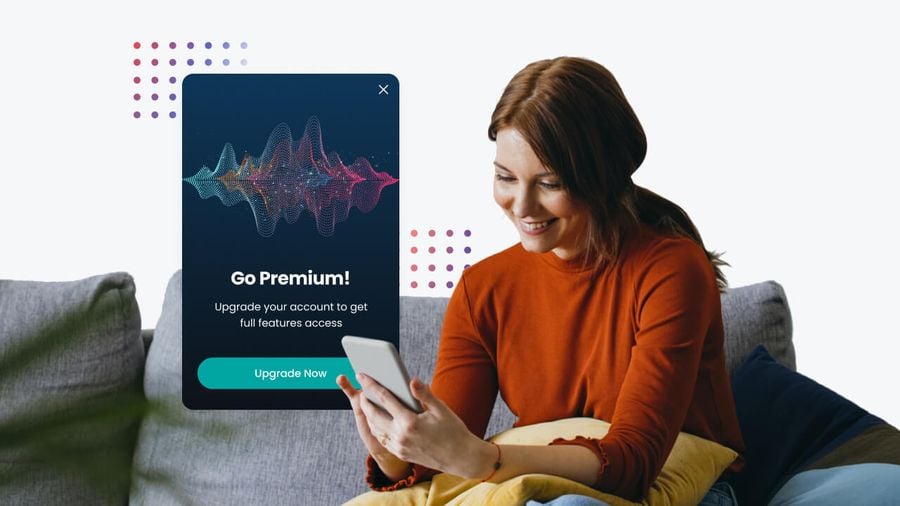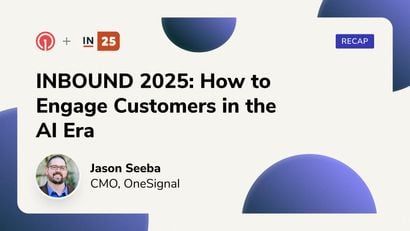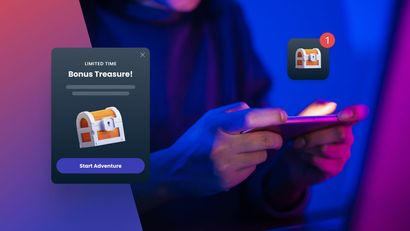Unfortunately, building a sustainable mobile app monetization model is harder than it sounds in a market where 80-90 percent of mobile apps launched in the app stores are abandoned after just a single use. Before you embark on the process of designing, developing, and launching an app, it’s worth your thought and energy to devise a sustainable mobile business model to make your mobile app dreams come true and keep your platform afloat.
In today’s mobile app ecosystem, more companies are choosing subscription-based models to grow sustainably. Today, we’ll get into how and why this can be executed.
What is app monetization?
To back up, let’s get clear on the basics of app monetization. Simply put, app monetization is the process of generating revenue from your mobile app.
As the goal of app monetization is to generate a profit for your app, the model chosen can ensure the survival or failure of your business.
Before landing on a subscription retention model, you’ll first need to evaluate the range of factors that contribute to whether this is the optimal pricing model for your platform.
What is a subscription-based monetization model in the mobile app industry?
Subscription models offer one or more payment tiers. Generally, the basic tier is available for free, referred to as the “freemium” tier, and the paid tiers unlock other content that a only small subset of users will leverage. As a result, your power users end up paying for your free users.
What’s the difference between an in-app purchase and a subscription model?
Relying on in-app purchases, or IAP, to monetize your app differs from using a subscription-based model. In-app purchases refer to users’ buying in-app offerings such as virtual services, assets, or exclusive experiences. The IAP model also applies to apps that enable users to purchase physical goods such as food orders from your delivery app, items from your eCommerce store, or transportation services.
In-app purchases can also refer to flat fees users pay to access select features in gaming apps. Users can make small purchases in a free app to enhance their experience, such as buying a new skin. In-app purchases are individual transactions, whereas subscriptions are recurring payments.
What to Consider When Adopting a Subscription-Based Monetization Model
With a successful subscription-based monetization strategy, your app can generate revenue without falling back on investors' funding.
Subscription models are effective for indie developers or smaller companies with limited bandwidth and funding. However, one downside of a subscription model is that users likely already have so many subscriptions they already pay for that incentivizing them to add another can seem potentially unattractive.
Before you get started designing your app in line with a subscription-based app monetization model, you should evaluate the following:
Your Core Offering: What is your value prop? What is the best way to showcase your offerings?
Your Users: Who are your users? What are they looking for?
Your Price Point: What pricing is reasonable for your specific audience or audiences? For instance, if your core audience is adolescents, consider the subscription fee you can reasonably set your subscription pricing at.
Your Vertical: What is your app vertical and what app monetization strategies are proven to work for your category? For instance, news apps have long used subscription-based models.
Why are subscription-based mobile app models on the rise?
In the past several years, various factors have contributed to the rise of subscription-based models, including privacy changes, increased access to customer data, and more.
Other industry-level shifts have accelerated a transition towards subscription models in the mobile industry, such as a rise in mobile-first financial decisions.
Data shows that in 2021, consumers spent an average of 4.2 hours daily on their mobile devices, and mobile fueled 45 percent more financial decisions according to the State of Mobile 2021 Report.
5 Tips to Ensure the Success of Your App’s Subscription Model
Now that we’re covered what a subscription retention model entails let’s get into some ways you can increase your chances of success in executing this model.
1) Implement Behavioral Analytics
Companies like Google and Facebook build and implement highly targeted campaigns based on elaborate user profiles . With Americans spending almost 60 billion hours per year on Google, smaller companies like your mobile app are now subject to the same targeting standards that tech giants set for the rest of the indusry.
Supporting why data collection is key for behavior-based targeting, one statistic shows that the average enterprise uses over 100 MarTech tools.
Within a subscription model, modifying your user experience based on behavioral triggers is one of the best ways to drive long-term engagement and retention. Within subscription models, your users have a heightened expectation for customization because they want to know that the subscription fee they’re paying is worth it. In contrast to an ad-based model, for instance, you have fewer, high-value users to please.
2) Leverage Helpful Integrations
Using integrations plays into many market-leading subscription apps’ successful user retention strategies. Apps that serve highly personalized experiences often collect data across touchpoints, using behavior, preference data, and purchases as signals for what to serve their users.
One critical example of an integration that can boost the retention of your subscription-based app audience is a tool such as RevenueCat, which provides mobile subscription infrastructure for platforms of all sizes, including top apps like VSCO, Notion, Life360, and ClassDojo count— into power this model at scale.
This type of integration makes building, analyzing, and growing mobile subscriptions more efficient. RevenueCat allows clients to easily set up manage products and subscribers (across iOS, Android, and web) and analyze purchase data – all without server code..
For instance, the RevenueCat integration helped our music production client Rapchat drive enhanced subscription-based app experience.
The app operates on a Freemium model and sends users various messages to upsell them.
“Our business model is subscription-based — artists can subscribe to Rapchat Gold unlocking all sorts of premium functionality including better vocal effects and auto-mastering filters,” said Miller.
Miller prioritizes building an app experience that users want and need on their journey as artists. Doing so helps the company maximize long-term subscription retention.
“In the end, It's pretty simple - if we succeed at consistently improving the product and making our customers happy, all the main KPIs including subscription ones will continue to grow and we will have a great business.”
3) Omnichannel Marketing
Multichannel messaging can be a powerful way to drive subscription retention. With various messaging channels, you can drive users towards the keeping or upgrading their subscription. For modern companies to effectively reach their users, they must be present across channels in order to holistically reach users across platforms and satisfy their heightened expectations for a cohesive customer experience.
For example, apps with a subscription monetization model can use push notifications to prompt users to upgrade, renew their subscription, reenter the app, and more.
Rapchat, for instance, sends special upgrade offers, such as holiday discounts, across multiple channels.
By driving the message home across multiple channels, Rapchat increases its visibility and gives users another chance to convert.
During Black Friday/Cyber Monday, for example, they sent an enticing 60 percent discount off Rapchat Gold across a variety of channels.
4) Leverage Data for Increased Personalization
Data is becoming increasingly important for mobile-first companies, especially those that leverage a subscription retention model. Letting data drive your approach to keeping users on your platform helps you meet users’ increased appetite for customization. In catering to your existing users, you’ll need to deliver a product that’s worth the weekly, monthly, or annual subscription fee you ask them to pay.
For instance, a Mckinsey study shows that companies that effectively leverage behavioral data are capable of outcompeting their peers by 85 percent in sales and over 25 percent in gross margin.
Taking an objective approach to retaining your users will involve responding to their direct signals, preferences, and characteristics.interactions, and lack of interactions with your platform.
5) Improve Ratings and Reviews
Your app store ratings and reviews contribute to your subscription-based app’s success in that they make your app more discoverable and appear more credible to potential users.
It’s important to find ways to collect positive ratings and reviews from existing users in order to drive future downloads and promote more subscriptions down the line.
One way to improve your app’s ratings and reviews is to run campaigns across one or more messaging channels, such as in-app messages, push notifications, or email, to ask satisfied users to rate and review your app.
Get Started with OneSignal
OneSignal is designed to help you seamlessly manage your user communication across every channel, including mobile push notifications, web push notifications, bulk SMS, in-app messaging, and email. Our platform is quick to set up and makes it easy to customize and automate your messaging strategy without doing any development work. If you don't have a OneSignal account, you can create one for free and start driving engagement today.
Get Started for Free



